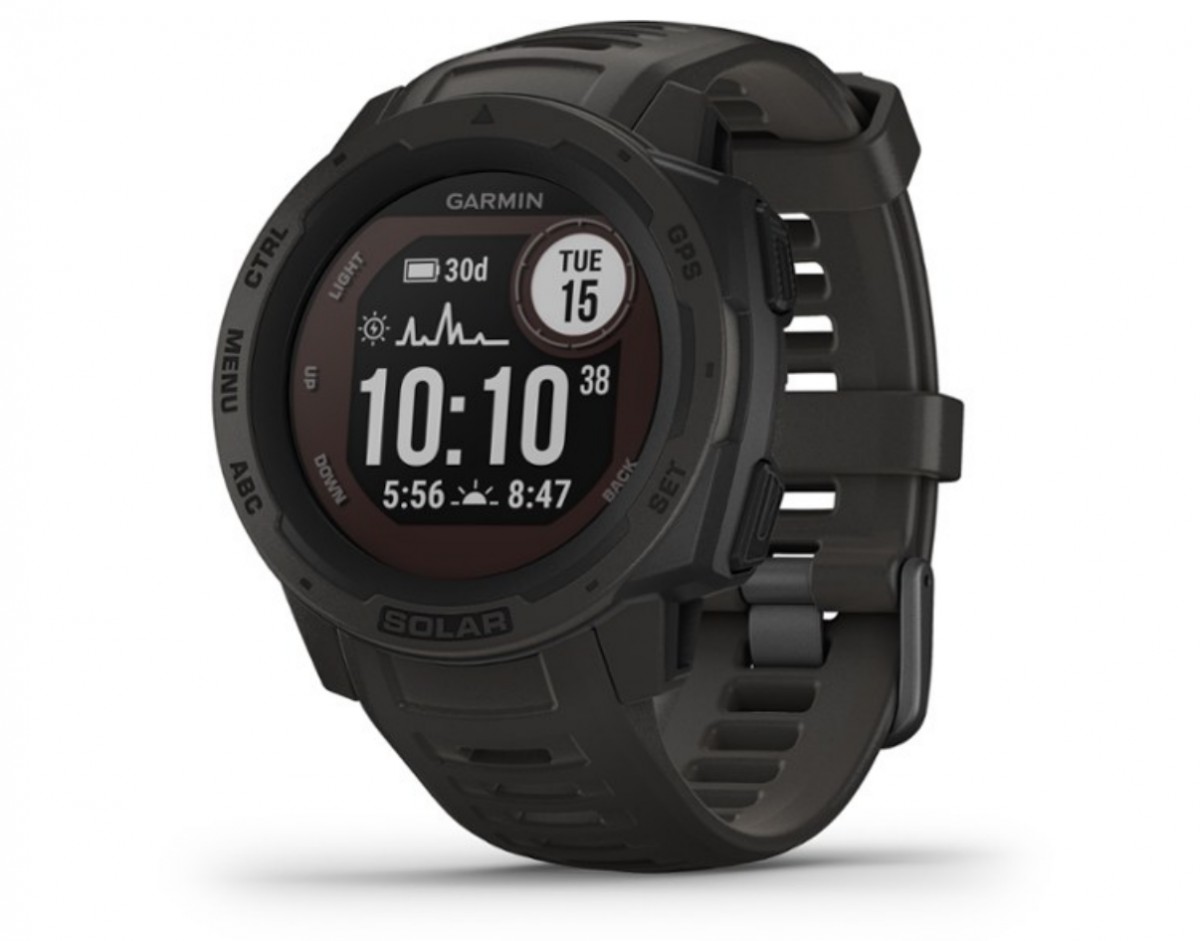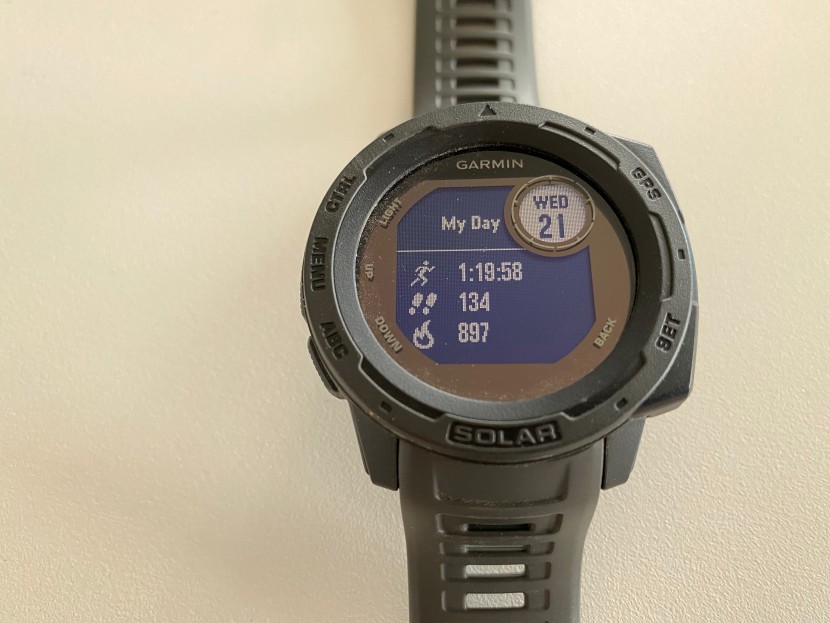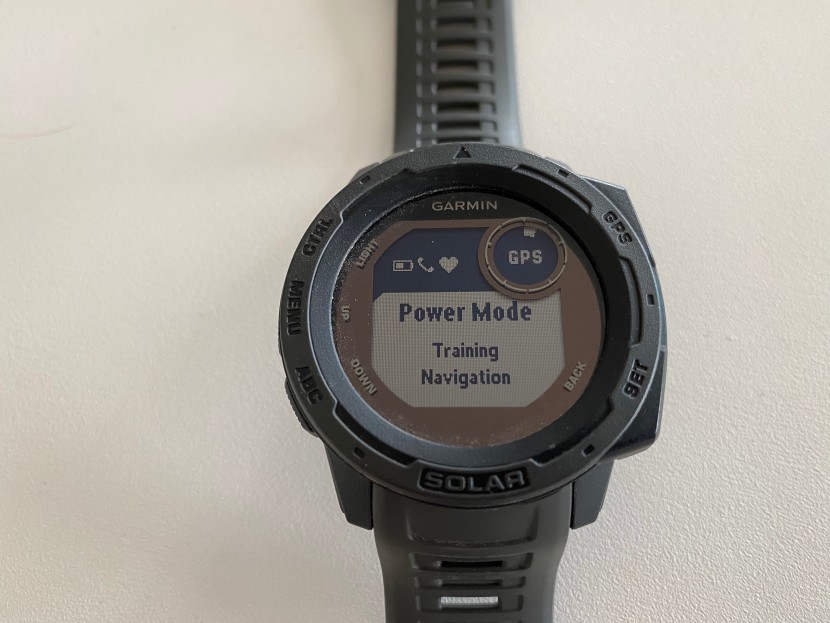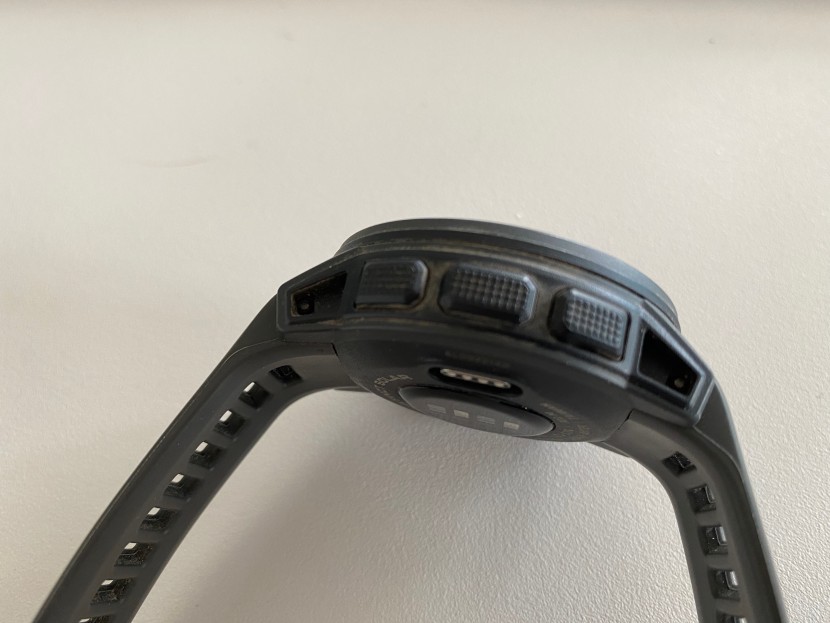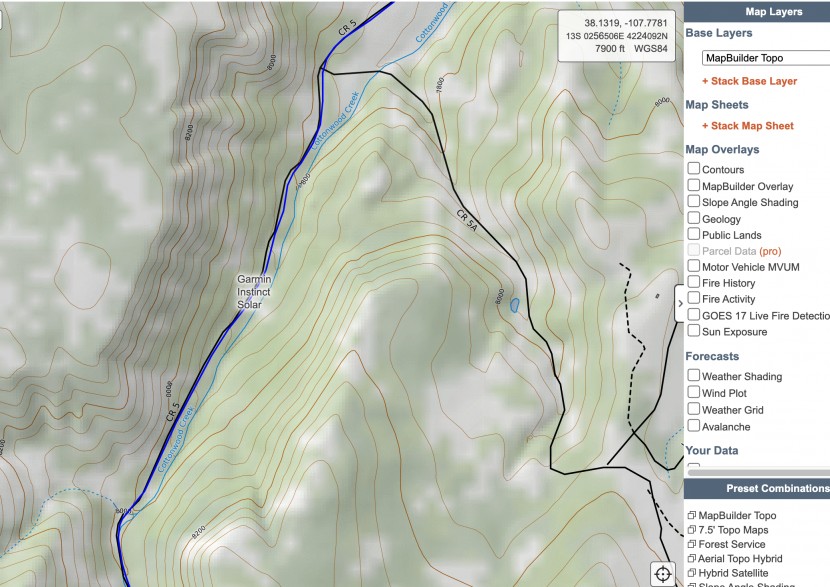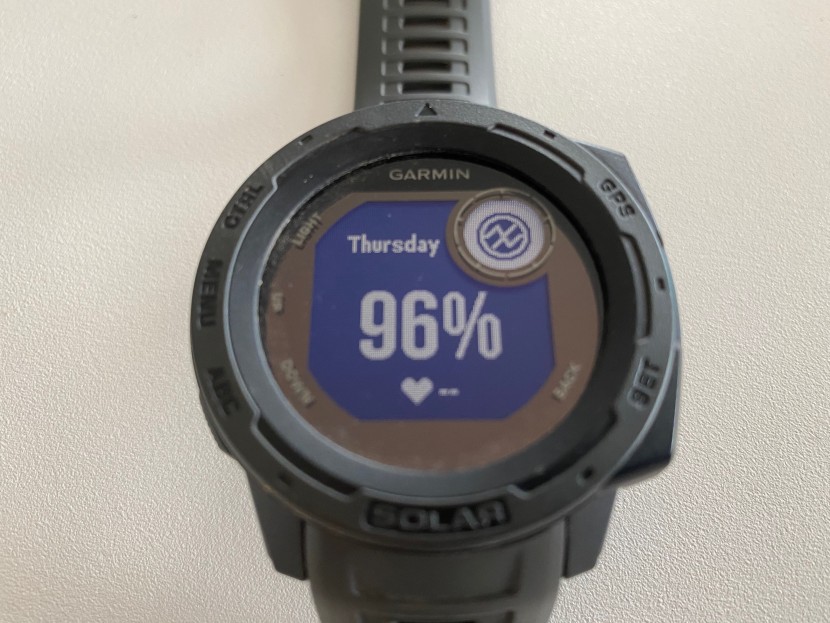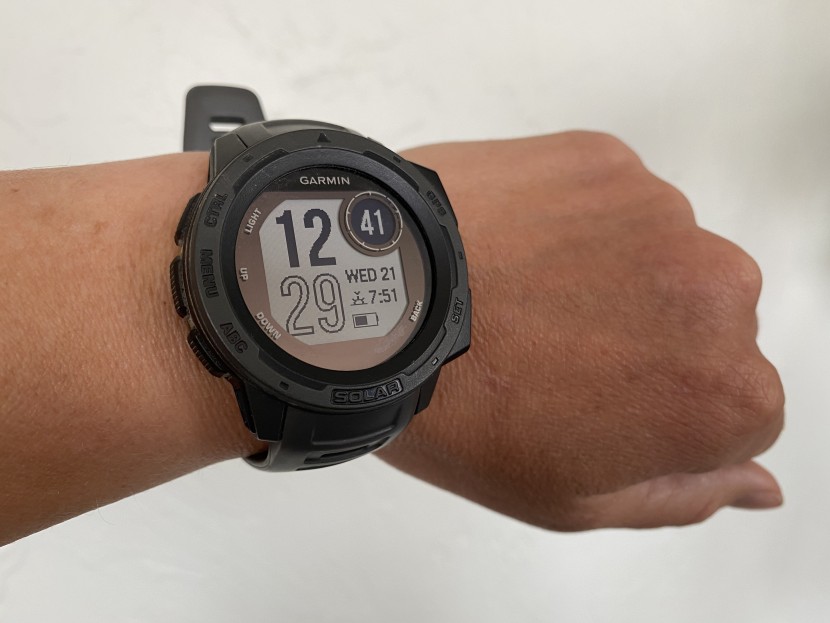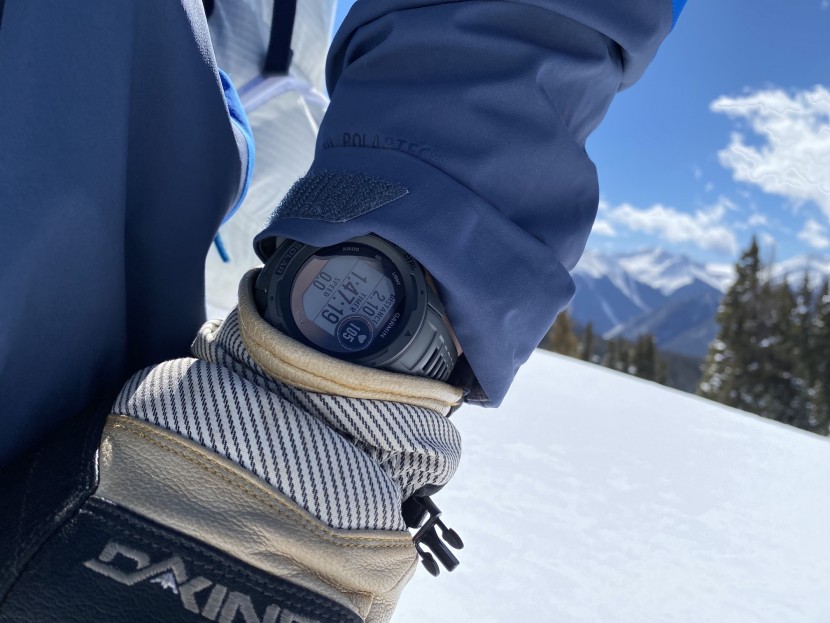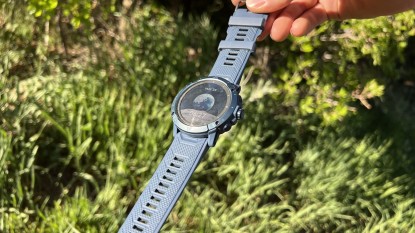Garmin Instinct Solar Review
Our Verdict
Our Analysis and Test Results
The Garmin Instinct Solar offers incredible battery life with photovoltaic panels built right into the glass. It's not as featured and integrated as other high-end GPS watches from Garmin, and the screen is a bit small, but we recommend it for those that need extended battery life on longer trips where access to an electrical outlet isn't possible.
Features
The Instinct Solar has many features akin to a medium-level GPS watch without all the bells and whistles. It can track fitness, offer a GPS track, and capture any data that you want. It offers excellent profile options, including tactical and navigate but doesn't have any preloaded layered maps. Unlike most other Garmin products, you can't add additional activity profiles, nor can you upload layered maps. This watch is built for simplicity and enhancing battery life.
The Instinct integrates well with the Google Connect app to give you all your data for any activity. It has several activity profiles that can be used or switched out, with the ability to modularize. Plus, you get access to the robust Garmin ecosystem. Use it with the Garmin Explore app to create courses.
Notable Features:
- GPS tracking
- Blood oxygen sensor
- Heart rate sensor
- Fitness tracking (pedometer, advanced sleep data, calories burned)
- Navigation (bread crumb trail, course upload, sight n' go, coordinates, trackback)
- Live tracker
- Area calculator
- Smart notifications
- Events and calendars
- Weather updates
- Barometric altitude
- Compass
- Solar intensity graph (how much sun was there today?)
- Timers
- 27 sports profiles (you can't add additional ones with the Garmin app)
- Water resistance of 50 ATM (up to 100 meters)
To see a full list of features, check out the specs chart .
Battery Life
The battery on this watch seems to last forever in smartwatch mode, and we're very impressed with its performance so far. Using a photovoltaic panel implanted into the Power glass of the watch face, it captures light and adds back battery life. It works incredibly in smartwatch mode (we only had to charge this once over three months, only after we ran the GPS all the way down), making it an excellent option for use on an expedition where GPS doesn't need to run the whole time. This scores top marks, not because of its battery life in GPS mode, but for its performance in smartwatch mode, with many battery-saving and recharging options. Battery charging (without solar) took about 140 minutes in our tests.
Garmin claims up to 24 days in smartwatch mode and 54 days with exposure to the sun. This is actually longer if the watch is always in the sun, as it can recharge itself. During our tests, we never really felt like we needed to charge the watch unless it was in the dark for over a month. For hiking and long trips where you might run the GPS here and there, we think this watch is a great option.
In GPS mode, there are a few different hourly claims. Garmin claims 30 hours without sun and 38 hours with the sun. We tested GPS use twice with the watch sitting still. During our first test, GPS time lasted 28.8 hours while in a car window, with some obstructions. During our second test, we put it facing down in an open field, where we got about 30.8 hours of life, averaging about 29.8 hours overall. So the GPS claim seems to be about right on. We imagine with movement, this would most likely be lower. Comparatively, the GPS time is similar to other high-end GPS watches and enough to last a fast 100-miler.
Garmin claims a maximum GPS life of 70 hours without solar and 145 hours with solar, with many of the functions are turned off (i.e., smartphone notifications, sounds, etc.). We, unfortunately, haven't tested this, but hope to on our next expedition in the upcoming months. It also has expedition mode, which takes a GPS point a few times a day. This is said to last up to 28 days (with no sun) and 68 days with solar.
So, do the solar panels really work? We tested this while running GPS and without. During the GPS run, we kept the watch in full sun to see if the battery ran down or stayed the same. We started with approximately 22 days of battery at the beginning. When running it down, we still saw a decrease in overall time. As a result, it can't charge fast enough to refresh the battery when running GPS simultaneously, but it will slow down the process of losing battery life.
During a sitting test, we started with 24 days on the battery dial and left the watch out during a bright day. After one hour, the battery life went up by two days. So, the solar panel works well in smartwatch mode. This is a great feature for longer trips or expeditions where you can't charge your watch or where the sun shines bright.
Overall, while this watch doesn't feature the best GPS battery juice on the market, it's by far the best for regular smartwatch use. If you plan on heading out on an expedition or longer activity, this watch helps slow battery drain down and will keep pumping if the sun is high in the sky. You can run a few GPS tracks a day and let it recharge when it's not tracking.
Ease of Use
This watch is relatively intuitive to use, and if you're used to Garmin products, the set-up is similar to others. It has many features, which take some time to get used to. Overall the learning curve is a little higher than other simpler designs, simply because some features require using an app, while others need to be found by holding down a button at a particular point.
The app is easy to use as well but looks busy with all the integrated features and options. While many other Garmin watches integrate instantly with the software, the Instinct Solar is built to be more separated from the software than most. That means you can't optimize widgets or use apps with this watch. Battery totals are shown as a number of days on the watch face, and this can be changed only if you change the watch face type itself. Overall, this makes it easier to use than most, but not as easy as simpler designs.
Accuracy
We found overall accuracy to be excellent. We tested GPS, heart rate, and blood oxygen saturation during our activities. While the heart rate and blood oxygen are not always precise, they did pretty well in comparison to the rest of the products on the market. GPS was right on point.
To test GPS accuracy, we rode our bike a known distance of 10.8 miles. After our ride, the Instinct Solar caught a distance of 10.81 miles with accurate caloric outputs and elevation details. This ride occurred through a canyon and on an open road. We also tested it while backcountry skiing through covered trees and running on trails. Never did we see more than a 1% variation from the actual distance reported. When we looked at the GPX track, the data received was smooth, with many data points taken to represent the activity accurately. We trust the GPS on this watch.
The heart rate taken on this watch was accurate when the sensor had a good connection to the wrist. The watch face itself is a little larger, so getting a good fit for both the blood oxygen and heart rate sensor can be tough (especially for smaller wrists), but we like that the strap can easily be cinched down to a relatively small size. Heart rate comes up almost instantly and, during our tests, it deviated by only 0 - 3 beats per minute, which is pretty impressive.
Blood oxygen also seems to be good. While other Garmin devices took a very long time to give us a reading on blood oxygen, we always get one in twenty seconds or less on the Instinct Solar. You can get a spot check for your blood oxygen, or you can set it to track your blood oxygen throughout the day. At 8,000 feet, we got a reading of 96%, which we believe to be accurate. When we went down to 4,000 feet on the same day, we got a reading of 98%. When we held our breath, we could see the number go down and back up again when we released. Comparing this to a higher-tech sensor, the readings were about the same.
Design
The Instinct Solar has a tactical, monochromatic look that many of our reviewers like for its simplicity. While the look is deemed cool by some, we weren't super impressed with the overall design. The screen is smaller than most, and the buttons are easily pushed during activity. It comes in one size only and weighs only 1.9 oz.
The screen is made from Power glass, which is also the photovoltaic panel. It feels like plastic, and while resistant to scratches, can get damaged. This makes us all want to use a screen protector, but it will negatively affect solar charging if you do. The raised bezel does offer some protection, and the polymer it's composed of is pretty rugged and tough.
We measured all aspects of this watch. The face is thicker (15mm) and on the larger side in diameter (46mm, including buttons). The screen is only 22mm wide, being less than half the size of the overall diameter, which we think is a design flaw. Garmin had to make room for all the different button labels in different modes, which was an oversight given that the watch face is so small. We found this more difficult to see while engaging in exercise.
There are five buttons, as is true for most Garmin GPS watches. They are flat, which originally made us think that they couldn't accidentally be pushed. However, when wearing the Instinct while skiing and running, we noticed that because the buttons are not spaced as far as other Garmin contenders, the top of our hand would curl over and accidentally switch screens and even turn activities on and off. Overall, this design has some good ideas, but there is room for improvement.
Value
The value of the Instinct Solar comes in the form of its rechargeable platform. The features are okay but pretty normal for any GPS watch. Given the solar collection features and the number of days it'll last in the backcountry with sunlight, this is one we'd recommend to ultrarunners, fast packers, mountaineers, or backpackers heading out for the long trail. The caveat is the watch does need sun exposure, so if you go to cloudy places, don't expect it to work as well. Also, be sure to take care of the screen and clean it regularly as watermarks and scratches can affect performance. For folks outside of these use cases, there are much better watches at a lower price for general fitness and outdoor activity tracking.
Conclusion
If you're seeking a watch with a solar rechargeable battery, the Garmin Instinct Solar is what we recommend. It's not built specific to fitness, but it has everything you need for longer explorations into the mountains. It boasts seemingly endless battery life in smartwatch mode, with the ability to keep your GPS going a little longer. While the watch is a great concept, Garmin has some work to do on the design, but it's still a good choice for long expeditions or trips where a regular recharge isn't available.


